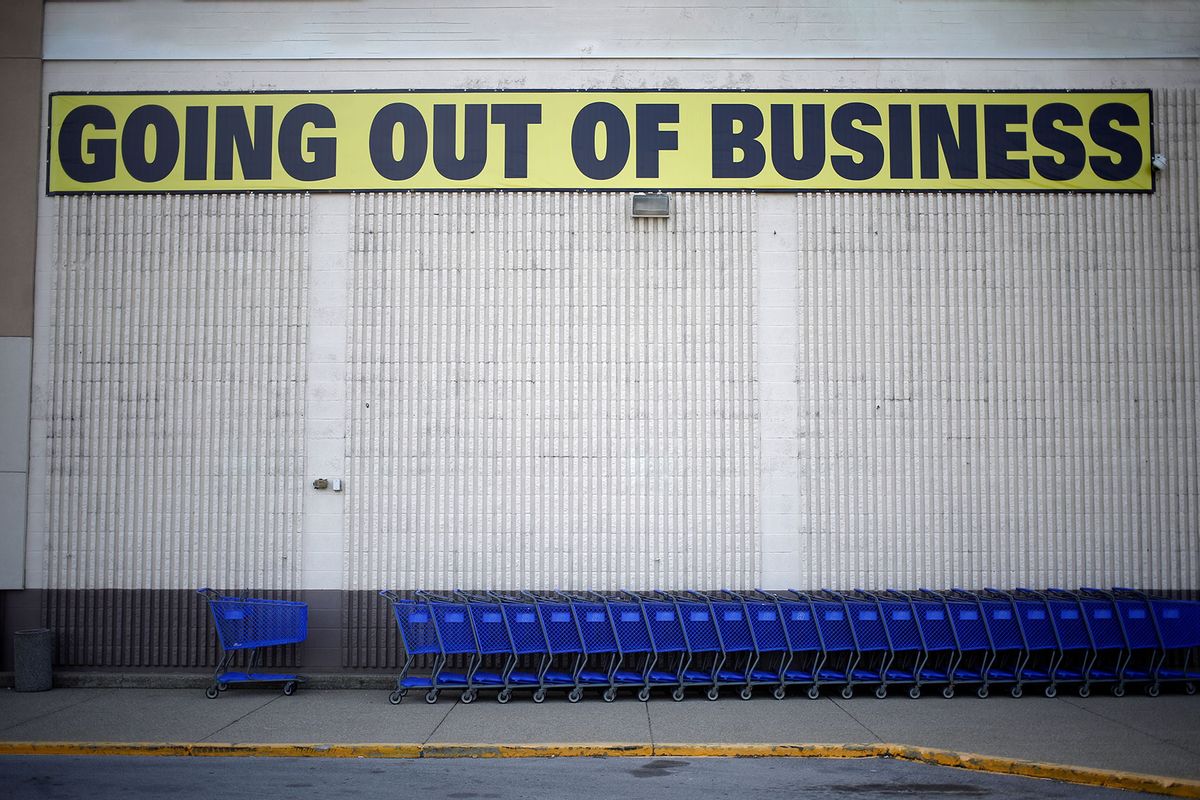Dollar Stores are so bad for communities.
But only regulation will change that. Poor people aren’t going to drive further and pay more.
Tbf, DG is no longer cheaper on anything that the one independently owned grocery store, except milk (about $2 so that’s worth it at $3.59)gallon), cookies (about a dollar) and crappy bread that’s overpriced at any grocery store. The nearest Walmart nearly 50 miles away was more expensive than our one, locally owned grocery store, which is significantly more expensive than the FL about 15 miles away, although some items are pleasantly and surprisingly less expensive (wild caught Pacific salmon filet, about$10 less. You can tell it isn’t farmed because of the taste and texture, but it’s not sockeye. Idk what it is, but it’s acceptable).
It’s never been about actually being cheaper, it’s about people thinking it’s cheaper so they shop there.
I know and I hate the stores I mentioned but it’s whatever is available and affordable at any given moment. I’m working on remedying that but gesture to everything.
Can somebody help me out? The title of the article suggests it will provide insight into the cause of large grocery retailers avoiding certain communities but all I am seeing is talk about the what and nothing about the why. Did I miss it or did I just fall for clickbait?
It’s a fluff piece. They briefly describe some of the circumstances but don’t explore any reasons behind them.
The one conjecture they do make, “some supermarket leaders may perceive low-income urban areas — particularly those inhabited by people of color— as higher-risk due to concerns about crime, vandalism or social instability” is contradicted later in the article. They cite 2 cases where supermarkets opened stores in these neighborhoods and operated them (one of them for 5 years). They would have had no need to guess. They had the balance sheets, income statements and cashflow statements so they would have known the answers down to all these questions down to the penny.
That said, the answer is fairly obvious. Companies want money. Companies close stores when those stores aren’t making them enough money. As the article states, these companies regularly open stores in poor neighborhoods, they just close them quickly. That strongly suggests that they think they might be able to make money and when they try the are unable to figure out how.
Sounds about right, not many stores can stay in business without turning a profit. This article pretty much says the same thing.
https://www.chicagobusiness.com/equity/chicago-grocery-store-deserts-south-west-sides
I’m not sure if we’re reading the same article or some parts didn’t load for you, but it seems full of whys:
Why the supermarkets left at the start
Why it’s harder for them to come back
Why certain urban areas have made it more difficult for them to come back (things like zoning)
Why supermarkets themselves may not want to come back (interview with rep and speculation on violence)Do these not help answer the question?
I get that it started 60 years ago with white flight and was exasperated 40 years ago with the consolidation of major changes, but why has their been no progress in correcting this? Why are zoning laws not being updated? Why do grocery store chains think inner cities are riskier? Why are new stores, like the referenced Whole Foods, not lasting? Why the focus on supermarkets instead of smaller neighborhood grocery stores that don’t have the same logistic issues?
Those questions are not directed at you. They are more a representation my disappointment and disillusionment. Thank you for the reply.
I guess that I was hoping that there would be more current information and not just an article about how nobody cares so nothing has been done in more than half a century.
Whole Foods? In a low income area? I’m not questioning why they left but rather why they thought they’d get business in the first place.
Some of those are answered. Some of those are also answered in the piece they linked that talks about the zoning issues. And some of those don’t have an answer beyond the obvious. I think the root of your unhappiness may lie with the few points that fit into that last category, but that’s hardly the fault of an article that I wouldn’t consider clickbait.
There’s a paragraph or two earlier on that touch on white flight
That said, studies have shown that some supermarket leaders may perceive low-income urban areas — particularly those inhabited by people of color— as higher-risk due to concerns about crime, vandalism or social instability
author Kameshwari Pothukuchi wrote that many supermarkets left mixed-income central city neighborhoods after civil disturbances in the late 1960s and 1970s, following customers who left those areas during “white flight” — and they never really returned. “Supermarkets have abandoned the inner city for suburban and exurban locations,” Pothukuchi wrote. “Which offered more land for parking, easier loading and unloading by trucks, convenient access to highways and arterials, and a development context for much larger stores.”




